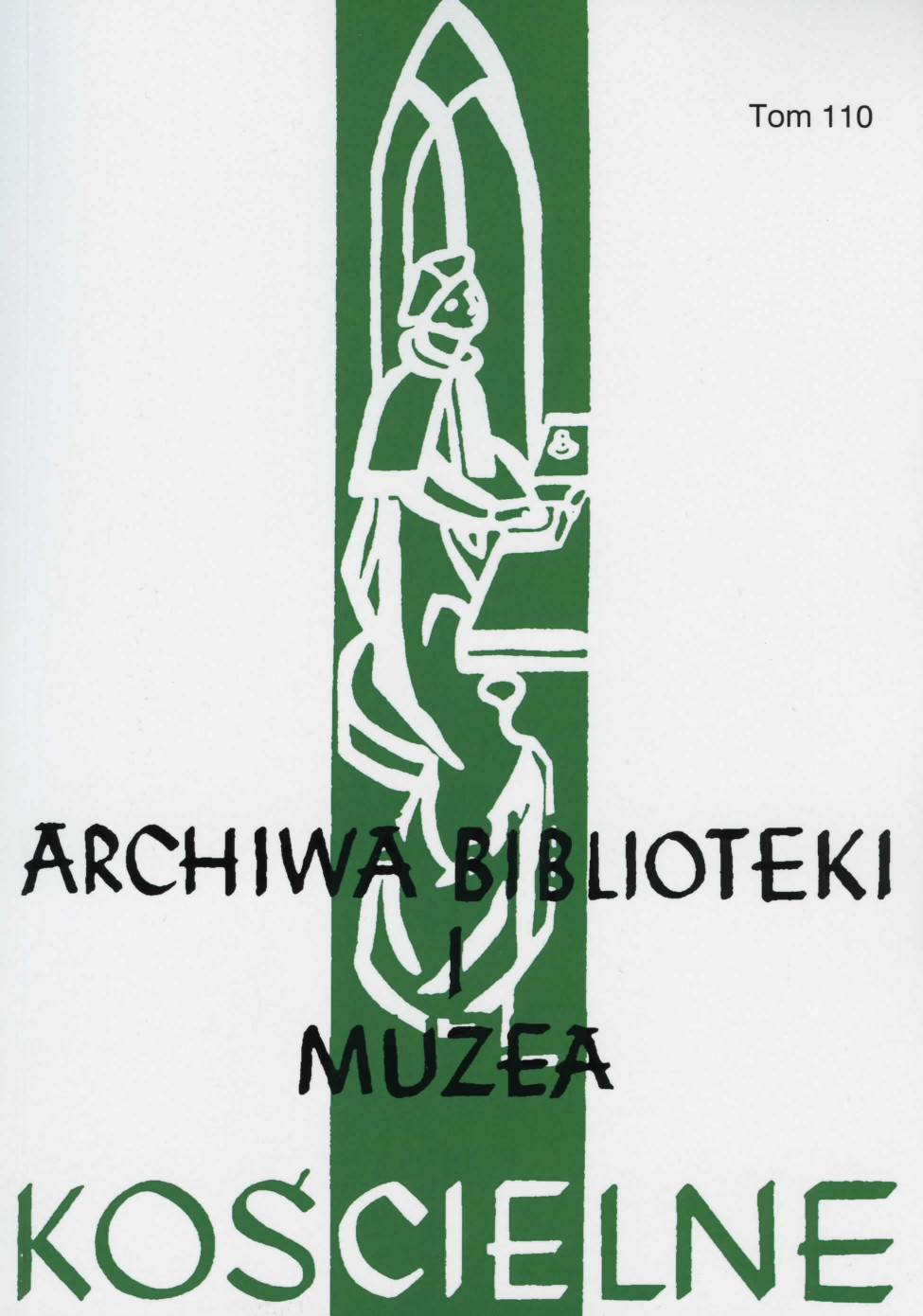Konserwacja szesnastowiecznej powieści alegorycznej Desiderosvs ze zbiorów Biblioteki Opactwa Benedyktynek w Krzeszowie
Conservation of the Sixteenth-Century Allegorical Novel Desiderosvs from the Collections of the Abbey Library of the Benedictine Sisters in Krzeszów
Author(s): Agnieszka Bangrowska, Tadeusz MaciągSubject(s): Christian Theology and Religion, History, Library and Information Science, History of Religion
Published by: Katolicki Uniwersytet Lubelski Jana Pawła II - Wydział Teologii
Keywords: conservation; water bath; sterinol; fungi; disinfection; protection; Krzeszów
Summary/Abstract: Conservation and microbiological research was carried out on a sixteenth-century collection entitled Desiderosvs, Abo Scieszka Do Milosci Bozey Y To Excellence, Zywota Chrzescianskiego: Dialog strangely devotional, from Spanish to Italian, French, German, Dutch Y Laciński ięzyk, and now for Poland postponed by Gaspra Wilkowski. The original work was published in 1515 under the title Espill de la vida religiosa. The book was printed in Krakow in 1589 at the printing house of Andrzej Piotrkowczyk. The book is printed on a handmade paper with a non-homogeneous basis weight ranging from 52g/m2 to 76g/m2. It contains 154 cards printed on both sides, the first 18 cards have no numbering, then there are 128 numbered cards and 8 unnumbered cards. The book is small. The dimensions of the book block are 15x10 cm. The contribution of the book is multiple. The rear cladding was made of beech wood. Before conservation works were carried out, photographic and descriptive documentation was made, including historical analyzes of the reconstruction of the luminaire. Paper laboratory tests were carried out: paper pH, fiber composition, thickness and basis weight were tested and microbiological tests were carried out. Mushrooms isolated from the object were identified to three species: Chaetomium globosum, Alternaria alternata and Aspergillus niger. Therefore, the paper was disinfected. After testing the resistance of the printing ink to water, the paper cards were subjected to a disinfectant bath in sterinol and the object was rinsed several times in pure distilled water, followed by a proper bath of cards in lukewarm water with the addition of gray soap. Smaller paper losses were supplemented manually with paper pulp from ICE in Lodz on the vacuum table, and large losses and missing card 15 were supplemented with a mass replenishment machine. The cards were then wet-glued using a 3% aqueous solution of methylcellulose while subjecting the paper to deacidification. Calcium hydroxide was used as deacidifying agent. The acidic substances contained in the paper reacted with calcium hydroxide and the excess of hydroxide in a few days under the influence of carbon dioxide from the air gave the reaction product, i.e. calcium carbonate, which is an alkaline reserve. As a result of the work carried out, the book was cleaned of various impurities, the paper structure was strengthened, tears and cavities were supplemented. The frame was reconstructed using beech wood and calf leather. Thanks to this research, the book will survive for the next years and will serve the next generations.
Journal: Archiwa, Biblioteki i Muzea Kościelne
- Issue Year: 2018
- Issue No: 110
- Page Range: 23-34
- Page Count: 12
- Language: Polish

